The barrel bushing showed good, tight fitting but could be field stripped with the fingers.
By R.K. Campbell
The field of 1911 handguns is crowded. There are many offerings, some of which are purely recreational handguns. The least expensive pistols are made to sell and are seldom worth betting your life on. Among the pistols tested and proven in the “affordable” range is the Magnum Research Desert Eagle. Over the past two years, I have fired approx. 2,000 rounds through several of these handguns. The consensus between myself and other interested shooters is that the pistols are good examples of the breed. They have good features and pricing in the low end of reliable 1911 handguns beginning at about $800. There are many models, however, and you must put in some time and research in choosing the pistol best suited to your needs. The bottom line is these handguns seem to be service grade after extensive testing and the performance is consummate with the reputation of Israel’s firearms industry. It is always good to find a stocking dealer, but increasingly we order a pistol and hope the product that is delivered lives up to the promise. In this case, the Desert Eagle 1911 has lived up to the promise of a reliable 1911 handgun.
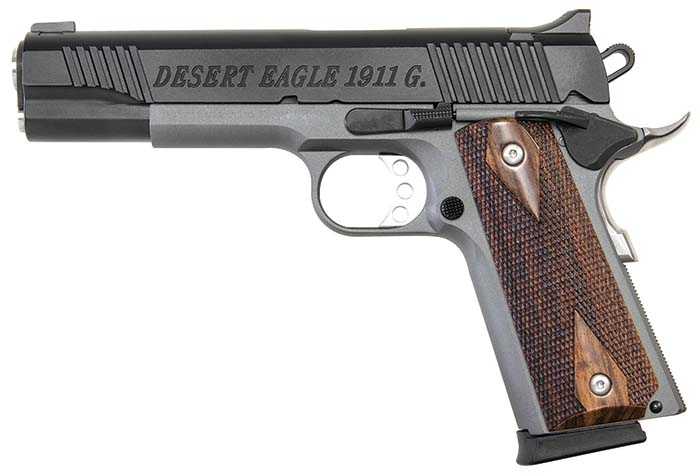
The first handgun tested was the 1911 G (“G” stands for Government Model). It is is a full size 1911 pistol with a 5-inch barrel. The Desert Eagle 1911 features controls that are designed to be ergonomic. The original beavertail grip safety, slide lock safety and well-designed grip are all 1911. The pistol features a low bore axis with a good balance that limits muzzle flip. There is little leverage for the handgun to rise in recoil. Trigger compression is straight to the rear and controllable. The slide lock safety is secure, indents firmly, and allows a trained shooter to deliver a brilliantly fast first shot. Upgrades include a speed safety and a wide beavertail type grip safety. The grip safety is more comfortable than the GI type, but more importantly helps lead the hand to the grip and ensures the grip safety is properly depressed.
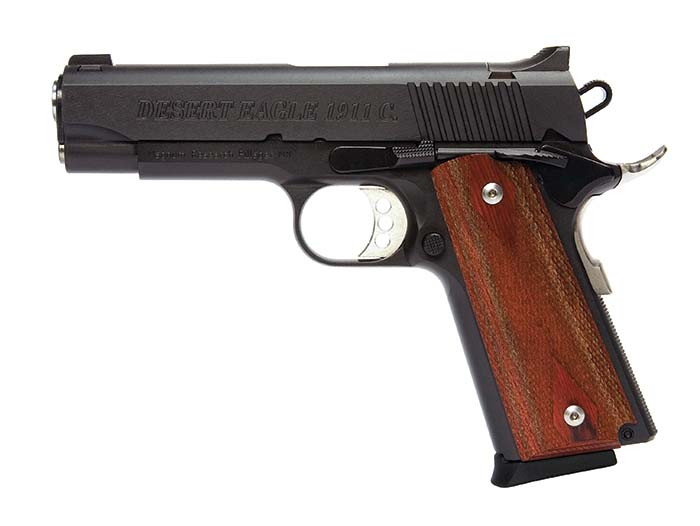
Like many modern 1911 handguns, the Desert Eagle 1911 features a cast frame and machined slide. While the pistols I have tested were blue steel versions, stainless steel pistols are also included in the lineup. The full size Government Model pistols feature forward cocking serrations. The Commander versions feature a standard slide. The mainspring housing is nicely checkered for a non-slip surface. The grips are credible designs that offer sufficient abrasion for good adhesion when firing the .45 ACP cartridge. The quality of the parts and the fit and finish is good. The Allen screw grip panels require a tool for removal, while the original 1911 grips could be removed with a cartridge case rim. The sights are among the pistol’s best features. The front post is a dovetail unit solidly anchored in place. The rear sight is, by definition, a high profile type that offers rapid acquisition during combat shooting. If you have a sight tool, the rear sight is adjustable for windage. The ejection port is enlarged and scalloped in the modern fashion and a full-length guide rod complicates field strip. On the other hand, some feel that the rigid guide rod is an improvement over the original 1911 design. With the FLGR, the slide assembly may be removed in one piece.
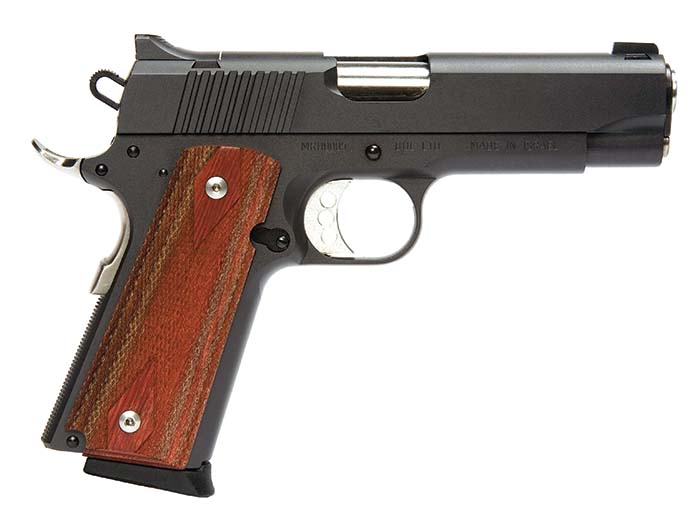
The pistol was field stripped and inspected and there were a minimum number of tool marks. Quality of manufacture seems good. The pistol was lubricated on its long bearing surfaces and a supply of magazines loaded with the Black Hills Ammunition 230 grain FMJ load was prepared. The pistol needs to be proofed with round nose loads of standard weight and velocity before moving to hollow point loads. For a trained shooter, the Government Model 1911 isn’t a hard pistol to control, and we expected good results. Drawing from a D.M. Bullard holster, the pistol proved fast on target and fast to a first shot hit. Firing fifty rounds of 230 grain from Ed Brown magazines proved the pistol comes out of the box running without a break or malfunction. The forward cocking serrations were used to rack the slide and worked well enough.
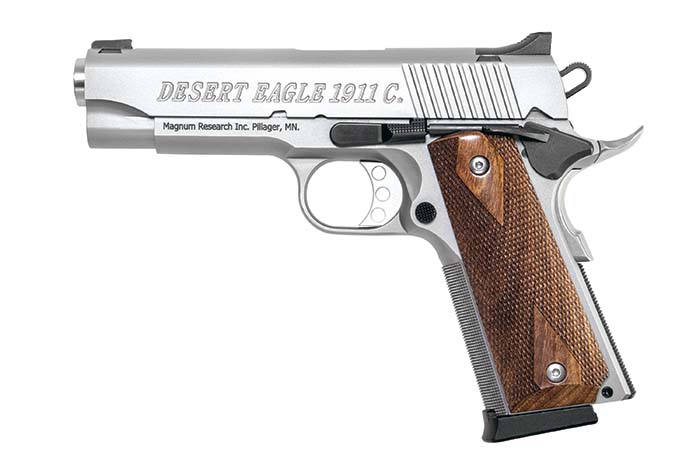
Moving to the 25 yard line, the Ed Brown magazines were loaded with a different load. In the past, the Black Hills Ammunition 185 grain JHP has given good results in several 1911 handguns and was chosen as an accuracy load. Using a standing solid barricade firing position, the pistol was fired in three runs of five shots each. The Black Hills Ammunition 185 grain JHP averaged four inches for the three groups. 8 rounds from a single magazine of the Black Hills Ammunition 185 grain Barnes Tac-XP +P was fired into a single three and one half inch group. This all-copper bullet is accurate! Both 185 grain loads are good defense loads. They fired about two inches low at 25 yards. Filing the front sight blade would bring sight regulation to standard. After examining the targets, I fired a single magazine loaded with five rounds of the Black Hills 230 grain FMJ load. I did not concentrate on accuracy this time, but still registered a four and one half inch group. Sight regulation was spot on with the
230 grain load.

I have also tested a Commander type Desert Eagle 1911, the DE1911C. Magnum Research advertises a bushingless lockup 1911 with a four-inch barrel…I have not yet encountered this handgun, although I was able to obtain images from the manufacturer. The Desert Eagle 1911 tested most extensively is the DE1911C. C is for Commander. This pistol features the standard design barrel bushing. The barrel bushing is shorter than the Government Model, but works in the same manner. This handgun is set up in the same manner as the Government Model but is slightly lighter and ¾ inch shorter. There are no forward cocking serrations. This handgun is similar in handling and feel to the Government Model. The pistol is faster from the holster, however, due to its short slide and it’s also faster to align on target. It is not as fast to an accurate hit at ranges past 25 yards, but for personal defense the Commander length barrel is an excellent compromise. This handgun has been fired with more diverse loadings than the Government Model. The pistol came out of the box running and gave good results in rapid fire combat shooting and tactical drills. The handgun has been properly cleaned and lubricated and exhibited no malfunctions for a full 500 rounds of mixed ammunition.
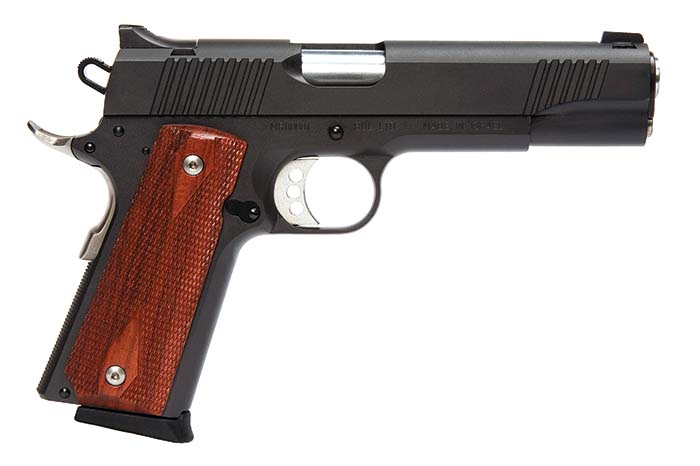
While carrying the pistol for personal defense, I adopted two capable holsters. One, the D.M. Bullard Combat design in Rust Elephant, is an excellent strong side holster that offers a good balance of speed and security. The second is a D.M. Bullard IWB design. IWB holsters are easily the most efficient for concealed carry under even a light sport shirt. However, considerable practice is required to execute a rapid presentation from concealed carry. A cocked and locked Commander size .45 in an IWB holster offers good concealment and a high level of protection. I recommend the D.M. Bullard company for first class concealed carry gear.
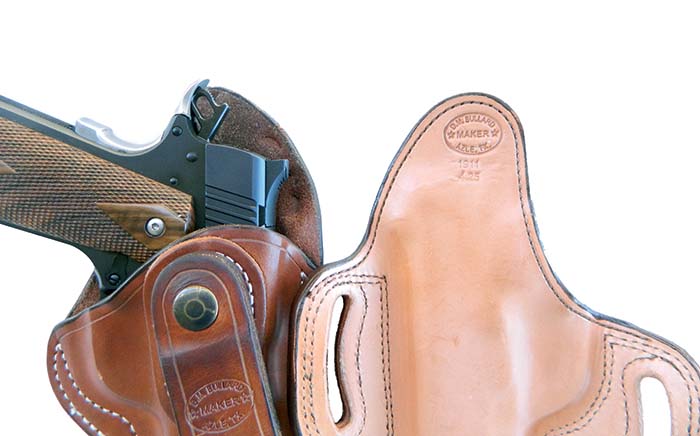
While the differences in handling between the two pistols were noticeable, they were also similar. The Government Model size is a good service pistol while the Commander is a good concealed carry piece. However, when firing off of the barricade rest, the DE1911C was practically as accurate as the Government Model despite the shorter sight radius. In fact the pistol demonstrated a five shot group of 3.4 inches with the Black Hills 185 grain Barnes Tac-XP +P. Both pistols demonstrated good reliability, however, the Commander pistol failed to extract several times after several weeks of testing at around the 650 round mark. The extractor was removed and the hook appeared to be less than ideal in sharpness. The hook was filed and the pistol reassembled and function resumed. The best course would have been to replace the extractor, but I took this expedient to resume testing. This isn’t uncommon with the 1911, but neither was it welcome.
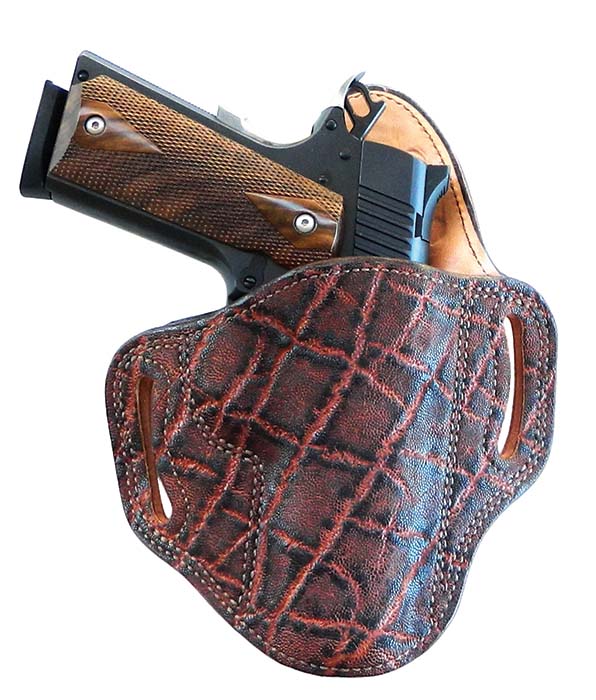
In the end, the Desert Eagle pistols seem to combine good function and performance. I would pay close attention to the extractor and small parts and give them a close examination. The pistol seems to be well made from good material.
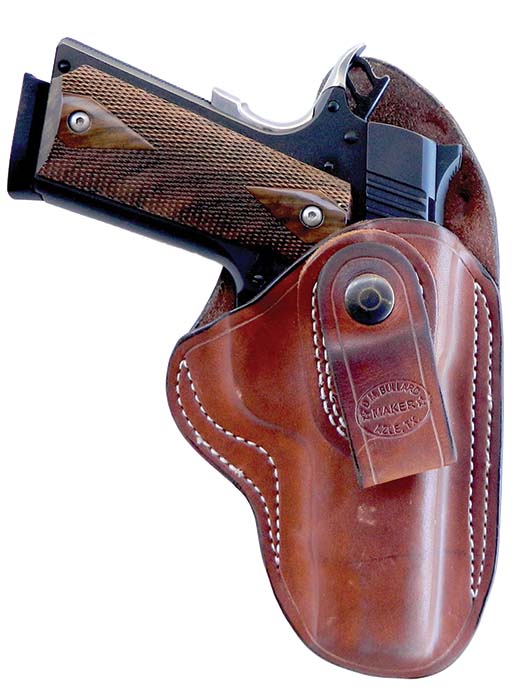
| This article first appeared in Small Arms Review V19N9 (November 2015) |











